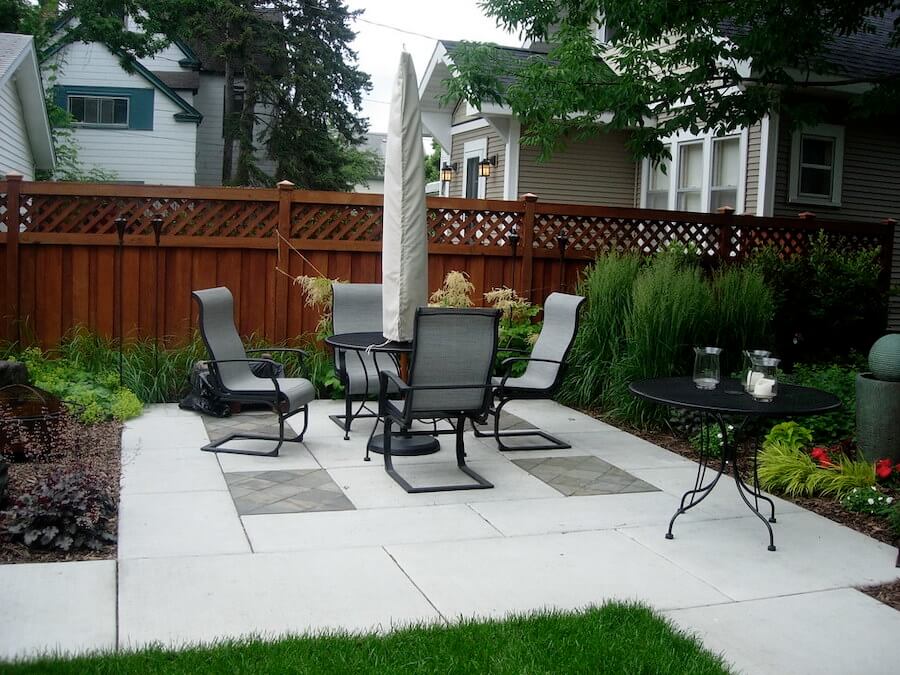Many homeowners often pay less attention and care for the patio in their backyard because they assume it is just an extension of their house.
However, it is a wrong viewpoint since this outdoor space can beautify and increase the house’s value.
For this reason, it’s best to care for this exterior part. People often seal this area to have a clean and smooth surface.
However, how often to seal the patio? If you plan to do this project, let’s check this article out to get some maintenance tips!
Table of Contents
How Often To Seal Patio?
The ideal time to reseal your patio is every 3 to 5 years. For more explanations, let’s scroll down to learn more!
How Often To Seal Patio?
According to experts, it’s best to seal your patio every 3 to 5 years since, after this time, its surface may start fading or show symptoms that need resealing.
However, the positioning of the courtyard is another crucial factor to consider before doing this project.
Besides, it would be best if you answered the following questions to ensure it’s time to reseal this outdoor area:
- How much friction do the slabs get?
- How many individuals are walking on it?
- Has the surface faced several stains?
- Are there many cars parked there?
- Is it fading in direct sunlight?
- Have you observed any mold growth on its surface?
Resealing times depend on your choice. Nevertheless, if most of the answers are yes or compromise your health or safety, it’s better to do it sooner.
Why Should You Seal Patio?
It would be best if you kept your patio clean, smooth, and sealed for many good reasons, as shown below:
The patio is an investment. You should ensure that you preserve and care for it so that it stays a lovely area in your house.
You’ll see that this region may lose its original color over time. Maintaining cleanliness and sealing can assist in keeping its color vibrant and pure.
In some cases, sealers might even make the color seem better! It turns out to appear better than it did when it was initially built in when this occurs.
Cleaning and sealing the courtyard may help keep the surface free of filth, mold, mildew, and other undesirable items.
Mold and mildew can be slippery and hazardous in several ways besides being an eyesore.
Removing weeds from the patio may be your very last priority. By sealing your paver, you may help stop moss development and the invasive growth of unwanted plants.
Sealer aids in stain prevention. Any surface that has stains may frustrate you. Also, you may not want to be more cautious while on this exterior.
Hosing off or power washing the patio should be sufficient to scrub these messes.
Additionally, the sealer helps maintain the interlocking nature of your paver if sand is in the spaces between the slabs.
In paver, rain, wind, and insects frequently cause disruption. The sealer aims to prevent shifting or sinking by keeping things tight and still.
You can increase the weather resistance of your courtyard by sealing it. This method aids in keeping it looking like new despite the downpours and storms.
Besides, sealer aids with drainage. You can prevent water from accumulating or migrating beneath the foundation by sealing this area, significantly reducing rain runoff.
Last but not least, sealing also aids in avoiding numerous risky situations. Your pavement may become slippery when wet if you decide not to get it sealed.
If mold develops as a result of inadequate sealing, that may also become highly slick and hazardous to walk on.
When Should You Seal Patio?
The best time for sealing the courtyard is in the spring or fall. Cooler temperatures enable the sealant to enter the pavers without obstruction.
When it comes time to reseal, the paver will be adequately protected. To prevent flaws while the pavements are set, ensure you keep debris and leaves off them.
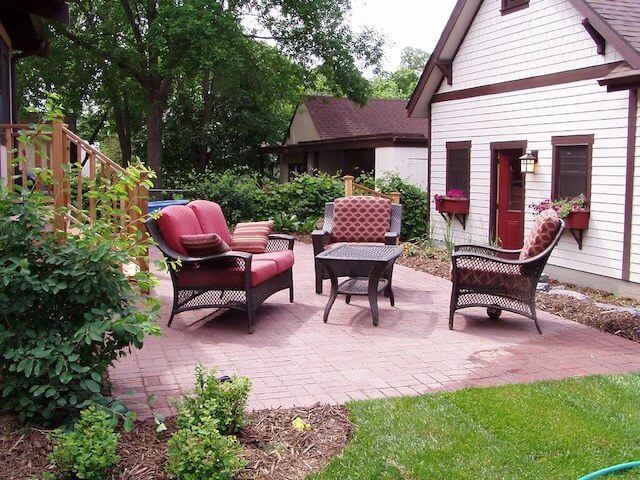
How To Seal Your Patio?
If you plan to seal your courtyard, let’s consider the following step-by-step instructions:
Preparations
You must make sure that the region can receive the sealer. Any dirt trapped beneath the sealer will remain since it is irreversible once applied.
For this reason, cleaning your patio is the first step of this DIY project.
Besides, ensure your courtyard has enough resting time, about 8 to 12 weeks, before applying sealer.
Efflorescence in the slabs may react to the sealer and cause calcium-based spots that are white and powdered, degrading the aesthetics of the surface.
You should thoroughly inspect the area for potential damage. Before applying sealant, you may have to replace specific slabs entirely or re-joint others.
Step-By-Step Instructions
After preparations, it’s time to apply the sealer to your patio. This process is relatively quick and easy.
Step 1: Paint the sealer on the slabs
Using a long-handled paint roller makes this task much simpler because you can complete it without bending over.
Cover the paint roller with the sealant after pouring it onto a painting tray.
After that, avoid all seams as you roll the sealant straight onto the pavers. It is so simple.
Step 2: Add extra layers of sealer
You need to consider the surface’s color before adding the second layer. One coat will do if you want an invisible finish.
The coating number to achieve the desired result depends on your need for color intensification.
- One layer: an improved color with a matte texture after drying.
- Two layers: a glossy surface.
- Three layers: a persistent wet effect.
Leave the first coat for about one hour to partially dry before applying the next layer.
You mustn’t allow it to dry entirely. The second coating will not thoroughly penetrate the slab if you let it dry completely.
Therefore, there is a chance that a sticky sealing material will be left on the patio surface.
Step 3: Allow time for the surface to dry
Never cross your patio again or let your pets out until the sealant has dried completely!
On a sunny day, it often won’t take much time. Three hours is usually a decent target for drying periods.
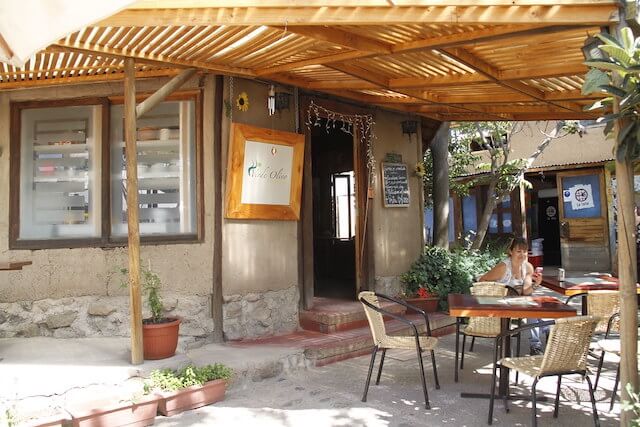
How To Maintain Your Patio?
Since the courtyard is a part of your home, your outdoor space needs the same maintenance as the inside.
Regular and proper maintenance will increase the longevity of the slabs while ensuring that this outdoor living area is always safe for you and your family.
Brush Your Patio
A well-kept patio is essential for an enjoyable evening and a relaxing supper. Success depends on the pavements being pristine and clutter-free.
All you need is a brush. Thorough weekly cleaning with a firm brush will eliminate loose debris and debris, stop weeds from sprouting, and avoid stains.
Maintaining a courtyard helps prevent the formation of fungus, mold, and other organisms that can damage the surface.
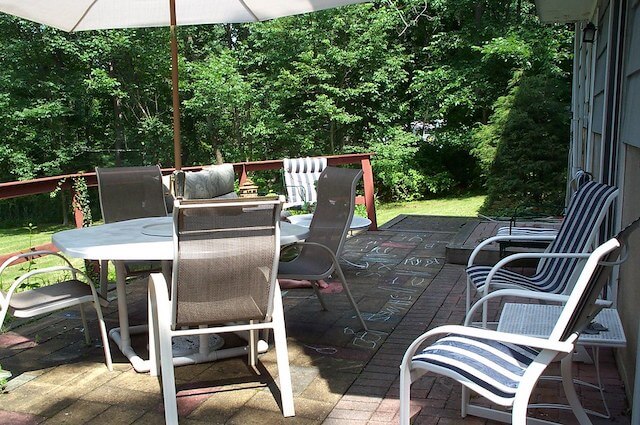
Don’t Keep Furniture In One Position
Occasionally move your furnishings. This way, mold and many other stains developing underneath furniture legs are less likely to occur.
Apply Sealer
Using a top-notch sealer, you can keep your patio and pathways weed-free or maintain the best appearance for this area for several years.
Remove Weeds
To make your task easier, wet the surface first and employ weeding equipment for pavements.
Instead of pulling weeds manually, you might try using organic herbicide products to eliminate them.
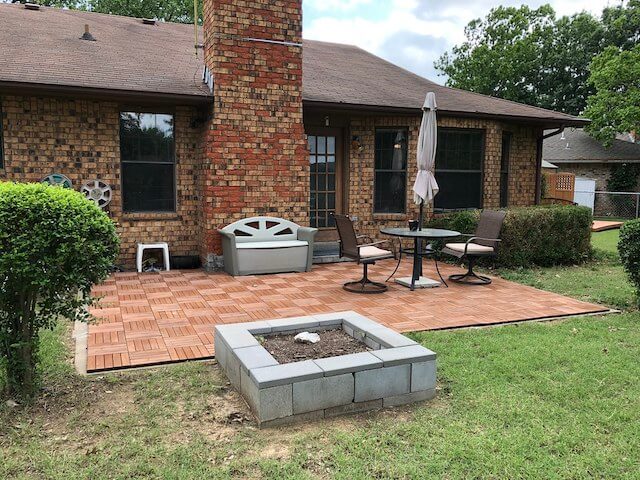
Pressure Washing
You can eliminate all debris from your patio’s surface with a jet washer.
All the dust, fungus, mold, and stains on the surface are removed by this pressure washer with high-pressure water.
Grout Repairing
Extreme temperatures can harm the grout on courtyard surfaces, causing discoloration and chipping.
You can repair grout yourself, but getting a professional is better to get the best result.
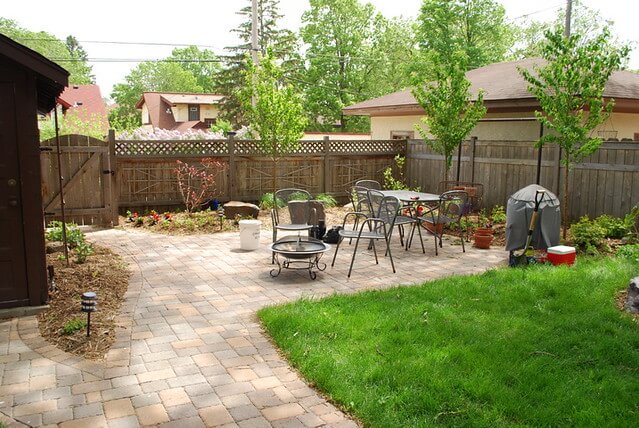
The Bottom Line
How often to seal the patio? Typically, the ideal time for this project is every 3 to years. It also depends on other factors like weather or sealer quality.
Sealing is one of the maintenance tips to make your pavements last longer. It’s best to do regular care, like brushing, removing weeds, or repairing grout.
Hopefully, this post will be helpful for your task. Thanks for reading!

